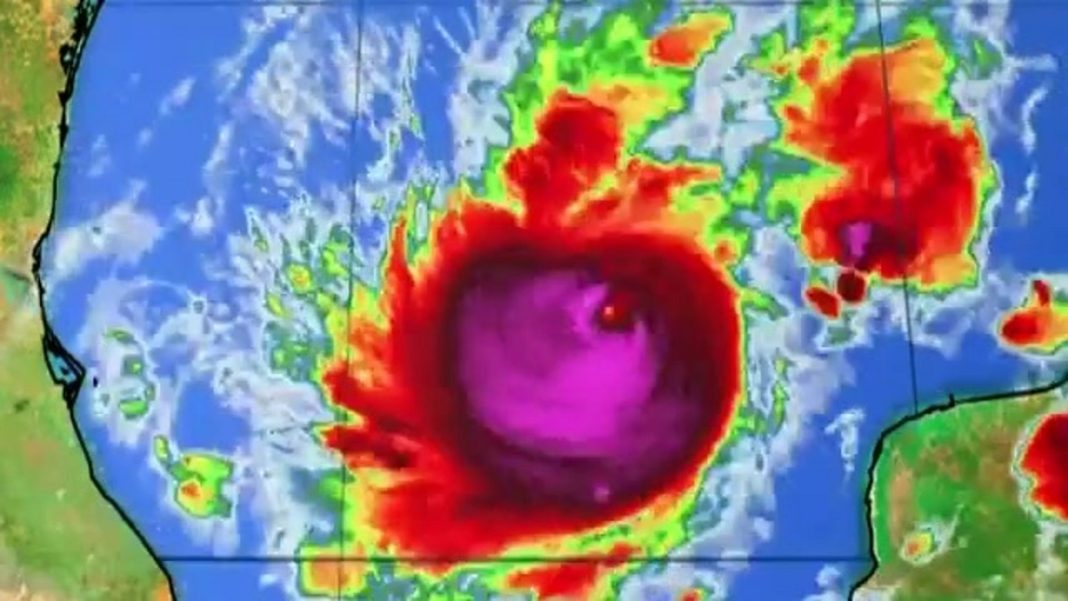As the sun rose over Belleair Beach, Florida, a palpable tension hung in the air. The Gulf Coast, still reeling from the devastation wrought by Hurricane Helene just two weeks prior, now found itself bracing for the onslaught of Hurricane Milton, a storm that quickly escalated to the formidable status of a Category 5 hurricane. This was not just another storm; it was a stark reminder of Mother Nature’s relentless power and the precariousness of human life in its wake.
By Monday, as workers scrambled to clear away the remnants of Helene—discarded appliances and debris littering the streets—evacuation orders were issued across the Tampa Bay area. This region, home to over 3.3 million residents, had not experienced a direct hit from a major hurricane in over a century, making the stakes incredibly high. Mayor Jane Castor of Tampa emphasized the gravity of the situation, stating, “If you want to take on Mother Nature, she wins 100% of the time.” Her words resonated deeply, reflecting a growing concern among officials and residents alike.
Meteorologists issued alarming forecasts, predicting an unprecedented storm surge of 8 to 12 feet in Tampa Bay—almost double the surge experienced during Helene. National Hurricane Center spokeswoman Maria Torres warned that the surge could lead to widespread flooding, with rainfall amounts potentially reaching 15 inches in some areas. This was not just a weather event; it was a call to action for residents to heed the warnings and evacuate if necessary.
The rapid intensification of Milton, with maximum sustained winds reaching 180 mph, caught many off guard. Experts noted that its swift escalation was reminiscent of past hurricanes like Wilma and Felix, driven by unusually warm waters in the Gulf. Colorado State University hurricane researcher Phil Klotzbach pointed out that the storm’s small “pinhole eye” contributed to its rapid strengthening, while University of Albany hurricane scientist Kristen Corbosiero added that the warm eddies in the Gulf acted as additional fuel for the storm.
As Milton approached, panic began to set in. Residents recalled the chaos of Hurricane Irma in 2017, when millions were urged to evacuate, leading to clogged highways and fuel shortages. This time, reports came in of gas stations running dry, even as Florida scrambled to secure fuel supplies. The state had managed to stockpile hundreds of thousands of gallons of gasoline and diesel, but the fear of being stranded loomed large.
Among the residents grappling with the decision to evacuate was Tanya Marunchak, whose home had been flooded with over four feet of water from Helene. Torn between staying and leaving, she expressed frustration over the lack of timely debris removal, which could turn loose items into dangerous projectiles in high winds. “If this one does hit, it’s going to be flying missiles,” she said, echoing the sentiments of many in her community.
In preparation for Milton, local officials took proactive measures. Schools in Pinellas County were converted into shelters, city garages were opened for residents to protect their vehicles, and airports braced for closures. Meanwhile, the Mexican state of Yucatan also took precautionary actions, cancelling nonessential activities and organizing evacuations for coastal residents.
As the storm drew nearer, the emotional toll on families became evident. Don Girard, whose home had been flooded multiple times in recent years, articulated the struggle many were facing: “It’s been difficult. I’m not going to lie to you. The last couple of years have been pretty bad.” His words encapsulated the broader narrative of resilience and despair that characterized life along the hurricane-prone Gulf Coast.
In this race against time, Floridians faced not only the immediate threat of Milton but also the haunting memories of past storms and the ongoing recovery from Helene. The coming days would test the mettle of a community already battered by nature’s fury, forcing them to confront the reality of living in a region increasingly vulnerable to the whims of climate change. As they prepared for the worst, one thing was clear: the power of hurricanes like Milton was a force to be reckoned with, and the lessons learned from each storm would shape the future of this resilient coastal community.


